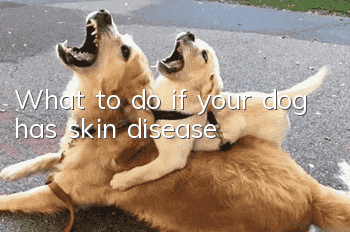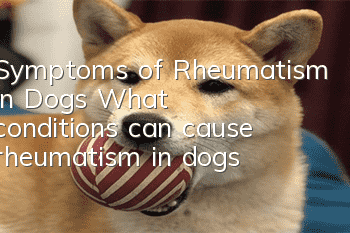What to do if your dog has skin disease

If a dog has a skin disease, it is recommended that the owner take it to the pet hospital for a skin scraping examination to confirm the type of infection before carrying out targeted treatment. First of all, if the dog suffers from fungal infection-type skin diseases, it is recommended that the owner use drugs containing terbinafine to treat it. Secondly, if it is a bacterial skin disease, it is recommended to use antibacterial and anti-inflammatory drugs for treatment. Finally, if it is a parasitic skin disease, it is recommended to use external anthelmintic drugs for deworming, as well as antibacterial and anti-inflammatory drugs to prevent secondary infections.
1. Skin diseases caused by bacterial infection
If the skin disease is caused by bacterial infection, symptoms such as redness, ulceration, and purulent secretions will generally appear. Therefore, antibacterial and anti-inflammatory drugs are needed. Get treatment. The general treatment course lasts for about 7-14 days. The bacteria on the surface of the dog's skin are cleared and the skin will recover after the inflammation is controlled. At the same time, it should be noted that it is strictly forbidden to bathe the dog during the treatment, otherwise it may cause the dog's skin to become moist, which in turn will breed fungi and worsen the skin disease.
2. Skin diseases caused by fungal infections
If skin diseases are caused by bacterial infections, symptoms such as hair loss, itching, scabs, and frequent scratching will generally occur. Because the fungus is contagious, the dog needs to be isolated first and then treated with antifungal drugs containing terbinafine. During the treatment period, the dog needs to be given medication on time to prevent the dog from developing drug resistance. Generally, it takes about 14 days to treat mild skin diseases, and longer if the disease is more severe. In addition, you also need to give vitamin B and take the dog to bask in the sun.
3. Skin diseases caused by parasitic infections
If the skin diseases are caused by parasitic infections such as fleas and mites, skin redness, itching, hair loss, and red spots will generally appear. and other symptoms. At this time, you need to use appropriate anthelmintic drugs to deworm, and at the same time, you need to use drugs containing amoxicillin and clavulanate potassium for anti-inflammatory and antibacterial treatment to prevent secondary infections on the dog's skin. In addition, it is also necessary to regularly perform external deworming treatment on dogs and disinfect the living environment.
- How to treat pica in dogs? Have you seen your dog eating randomly?
- Why do dogs need their nails trimmed? Do you trim your dog’s nails?
- How long does it take for a dog to die from heat stroke? How many hours does it take for a dog to die from heat stroke?
- Differences between Shiba Inu and Akita Inu. Pay attention to these points and it’s super easy to tell the difference!
- What are the reasons for dogs’ gastrointestinal problems? Dogs must be fed regularly
- How to treat urticaria in dogs Symptoms of urticaria in dogs
- How to train a dog to hold a ball Dog skill training methods
- Do you know what breeds the top three dogs with the highest IQ are?
- What to do if a dog eats shit? Is it true that a dog can’t change its habit of eating shit?
- Is Labrador aggressive? What are the advantages of Labrador?



